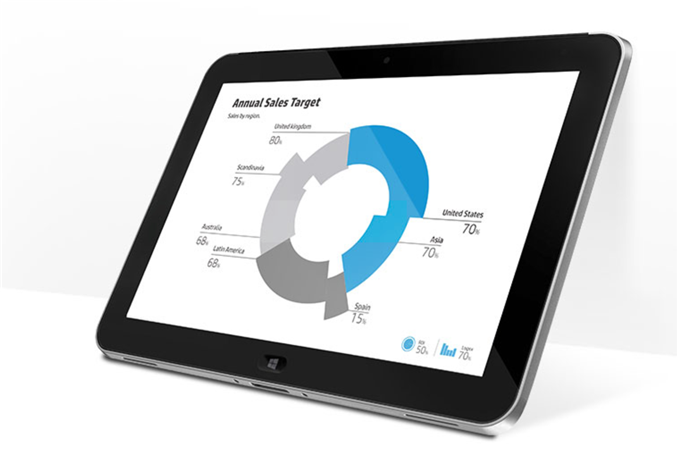Ask AnandTech: Tablets at Work, What are Your Experiences?
by Anand Lal Shimpi on June 12, 2013 3:13 PM EST
The tablet market has grown tremendously over the past few years. What started as a content consumption device for consumers has transformed into a device that has started to pull sales away from traditional notebooks. The obvious next step for tablets is towards the enterprise and business users.
As my usage models tend to be a bit unusual, when tasked with finding out how people use tablets for work my initial thought was to go to you all directly. So, how do you or could you use use tablets for work? What possibilities do you see for tablet use in work going forward? Respond with your thoughts in the comments, a lot of eyes will be watching this discussion and you could definitely help shape design decisions going forward.










148 Comments
View All Comments
jamyryals - Wednesday, June 12, 2013 - link
Like a lot of developers now, I have a laptop workstation that docks at work to multiple monitors. I hope my next workstation is a tablet that docks into a pro quality workstation dock where I can attach Monitors/HDD/USB Devices. At the end of the day I just want to grab the little tablet thing and leave all the serious work stuff on my desk. Re-dock at home if I need to work some more, or just tinker with the tablet on the couch.The latest tablet+keyboard devices are starting to get interesting, but fully capable workstation docks need to be part of that story before you spend thousands on a machine for work.
varad - Wednesday, June 12, 2013 - link
^^ This ^^pancakes - Wednesday, June 12, 2013 - link
I think that sounds great. Something like a Transformer tablet running x86 Windows, with a desk dock and a laptop dock.Oh man I want one of those.
MrSpadge - Wednesday, June 12, 2013 - link
It's called the Thinkpad Helix.VikingDude151 - Wednesday, June 12, 2013 - link
The Holy Grail for Windows 8 and tablets is described in jamyrals post. Devices just have to get there.I would take it further, that by leveraging VDI and other technologies the smart phone should replace "tablet" in the above. Large tablet screen being just a larger LCD and battery pack that the phone docks into.
Nexing - Monday, June 17, 2013 - link
Yes, except that tablets would be seen as another "partial" in a chain of connected tools. The root of it not been a phone but something like the ilock (PACE managed). A device that physically carries the software permissions, except that with the future device, the user will have -thru it- the control of passwords, codes, favorites, mappings,for office, house and appliances preferences, etc.conveyed to the phone, tablet, laptop, desktop, car and whatever needs and is defined including e-commerce and commerce or agreed shared places and spaces.//The actual fight between OSes and Mobile products (tablets vs phones vs laptops) is imbedded with the aim to define which one gains the "identity control", whereas many of us believe this will be kept as closer to the individual as the choice availability offers, weighted with the different ranges of accessibility that those mentioned tools provide to the customer.
andrewaggb - Wednesday, June 12, 2013 - link
As a software developer, I can't think of anything work related I'd rather do on a tablet. I have an ipad and a galaxy note 2, and I think they're both pretty much useless for anything other than reading emails as far as work goes. And even then they are so limited with what they can do with attachments and once you want to edit or reply I give up and use a laptop or desktop.The idea of using a tablet as a desktop/laptop replacement still appeals to me provided it has a proper dock so I can use at least 2 external high res monitors, wired gigabit ethernet, and standard desktop peripherals. I'd use it as a tablet on the couch, but otherwise I'd use it like a desktop. It's still attractive to me because it would keep my data, applications, etc portable. Cloud works ok for document portability, but keeping all your applications and OS up to date on multiple machines is a huge time sink.
jdsvii1986 - Wednesday, June 12, 2013 - link
Yeah this exists, it's called the Surface Pro. Girl sitting next to me at work has 2 monitors, a keyboard, and mouse all hooked up to a dock plugged into the USB3 port on her Surface. Works like a charm.andrewaggb - Wednesday, June 12, 2013 - link
It is my understanding that the USB3 docks have video limitations with reports of dropped frames/poor youtube performance and the like. I work with video surveillance systems so I wouldn't find that acceptable.DanNeely - Wednesday, June 12, 2013 - link
A single 1920x1080 screen output at 24bit color/60hz would need ~3gigabits of bandwidth; ~60% of USB3s theoretical limit. Assuming similar efficiency levels (though I think USB3 is better) to USB2 this would be within the range of barely possible without compression/lossage. 2 such monitors would require some level of compression; but much less than the ~3x needed for 1024x768 over USB2 which I've seen elsewhere cited as the max a USB2 adapter can do without problems in general use.Video playback is probably more difficult than general use though; because any framerate jitter will be readily visible and it doesn't take much latency before the audio and video are noticeably out of sync.